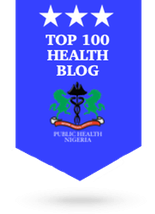In case you missed it, March 13th may have seemed like just another dreary Monday to you, but it is actually oh so much more. It’s Napping Day. Yes, that’s right, a holiday created to celebrate the art of taking a nap. Before you laugh it off, consider that in many cultures napping is an important ritual that typically takes place after lunch. Think siestas in Spanish countries and riposo among the Italians, just to name a few. And in certain cities in China, nap bars exist for the sole purpose of giving executives a place to squeeze in a midday doze. In the United States, we call those Power Naps.
Maybe the parts of the world that encourage a little afternoon snoozing have the right idea. After all, there are certain benefits we derive from napping. Read on to find out what daytime slumber can do for you.
Boost Your Mental Abilities
Taking a nap can help you feel restored and relaxed, as well as improve your cognitive functioning. After a short sleep, you become more aware of your environment, performance may be increased, and you make fewer mistakes. As evidence, a 1995 study at NASA showed that when tired pilots were permitted to take a 26-minute nap, their performance levels were enhanced by 34 percent and their alertness was an impressive 54 percent greater.1 Rosekind, MR; et al. “Alertness management: strategic naps in operational settings.” Journal of Sleep Research. December 1995. Accessed 1 March 2017. http://www.ncbi.nlm.nih.gov/pubmed/10607214. For the non-astronauts among us, naps can help prevent drowsy driving crashes if you pull over for a 20-minute snooze when you begin feeling sleepy behind the wheel.
Lower Stress Levels
We all know stress is bad for you and can take a tremendous toll on your health over time. Naps are a great way to relieve stress during the day. In fact, a 2012 study at Allegheny College in Meadville, Pennsylvania showed that subjects who were permitted to take a nap prior to a difficult test had lower blood pressure after completing the test than their peers who refrained from napping.2 Brindle, RC and Conklin, SM. “Daytime sleep accelerates cardiovascular recovery after psychological stress.” International Journal of Behavioral Medicine. March 2012. Accessed 1 March 2017. http://www.ncbi.nlm.nih.gov/pubmed/21359666.
Put You in a Good Mood
Let’s face it, walking away from all of the daily minutiae and aggravation that often accompanies it to lie down and take a nap is empowering. You get a little rest and relaxation and wake up in better spirits. Whether you can just fall right asleep or need to do some relaxation exercises to achieve slumber, just make sure you clear your mind because a it won’t do you any good to obsess over problems during what’s supposed to be rest time.
Promote Creativity
Taking a quick nap can get your creative juices flowing. You may find you wake up ready to take on new challenges or with an answer to an earlier problem. This isn’t just coincidence, either. A 2012 study at Georgetown University in Washington, DC found that brief naps increase activity on the right side of the brain, which is the area closely associated with creativity.3 “Might Lefties and Righties Benefit Differently from a Power Nap?” Georgetown University. 17 October 2012. Accessed 1 March 2017. http://explore.georgetown.edu/news/?ID=66294.
Make You More Productive
If your boss isn’t thrilled with the idea of afternoon naps, you might suggest that research has shown naps improve productivity. A 2015 study at the University of Michigan in Ann Arbor showed that work efficiency and attitude were actually increased after employees had a snooze on the job.4 Goldschmied, Jennifer R.; et al. “Napping to modulate frustration and impulsivity: A pilot study.” Personality and Individual Differences. November 2015. Accessed 2 March 2017. http://www.sciencedirect.com/science/article/pii/S0191886915003943.
Just keep in mind that all naps are not created equal. To achieve a satisfying siesta, focus on:
Nap Duration: If you want the most beneficial nap possible, don’t sleep for hours. The ideal length is generally 10 to 30 minutes; longer than that may promote a deeper sleep that leaves you waking up disoriented rather than refreshed.
Nap Setting: The right environment can go a long way to a successful nap. Choose a quiet, darkened room with a comfortable reclining chair, couch, or bed. And, if possible, set the temperature to approximately 65 degrees so you can sleep most restfully.
Nap Timing: Plan your afternoon around your nap if you can. Naps are typically best taken between 1 and 3 pm., when you may hit that midafternoon lull. Just don’t nap too late since that can impact your ability to fall asleep at night.
References
| ↑1 | Rosekind, MR; et al. “Alertness management: strategic naps in operational settings.” Journal of Sleep Research. December 1995. Accessed 1 March 2017. http://www.ncbi.nlm.nih.gov/pubmed/10607214. |
|---|---|
| ↑2 | Brindle, RC and Conklin, SM. “Daytime sleep accelerates cardiovascular recovery after psychological stress.” International Journal of Behavioral Medicine. March 2012. Accessed 1 March 2017. http://www.ncbi.nlm.nih.gov/pubmed/21359666. |
| ↑3 | “Might Lefties and Righties Benefit Differently from a Power Nap?” Georgetown University. 17 October 2012. Accessed 1 March 2017. http://explore.georgetown.edu/news/?ID=66294. |
| ↑4 | Goldschmied, Jennifer R.; et al. “Napping to modulate frustration and impulsivity: A pilot study.” Personality and Individual Differences. November 2015. Accessed 2 March 2017. http://www.sciencedirect.com/science/article/pii/S0191886915003943. |











